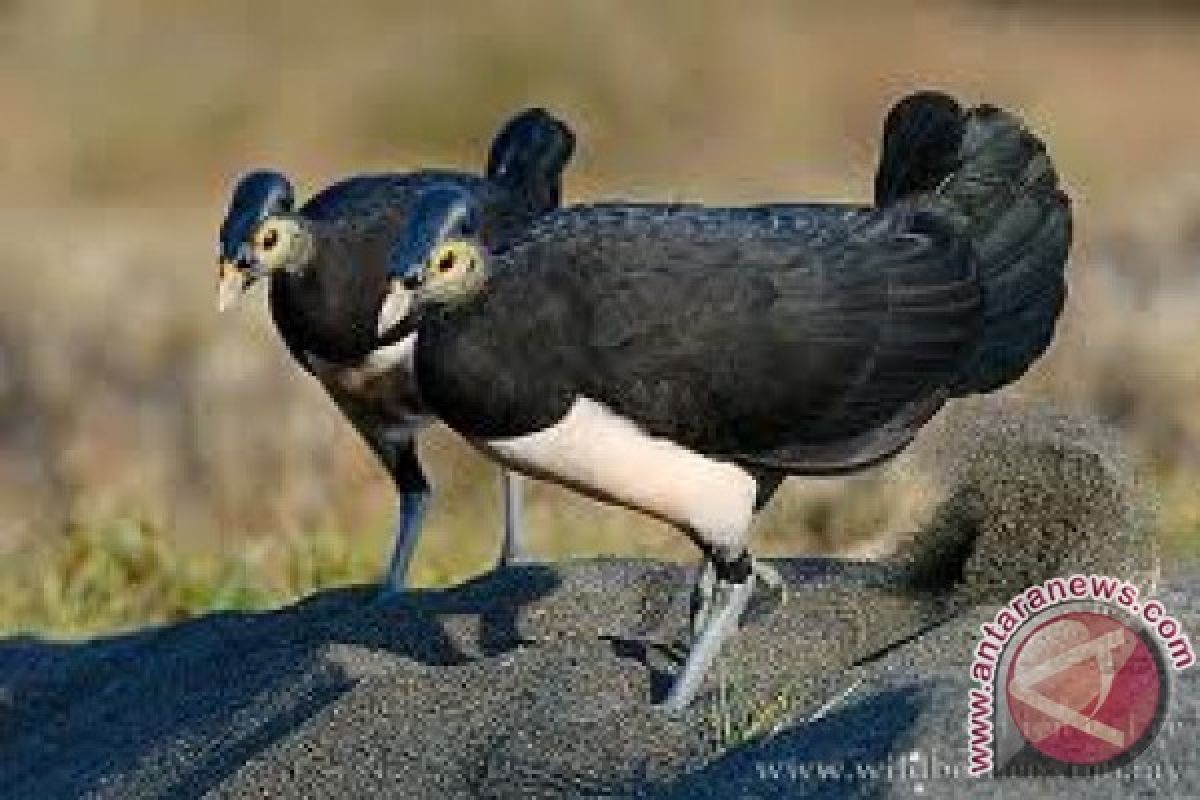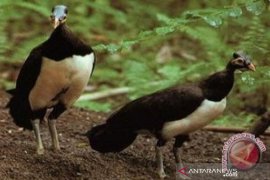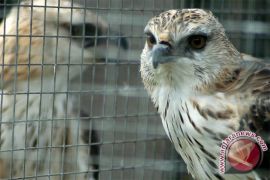Indonesias island of Sulawesi is home to the maleos chicken-like creatures with highly unusual reproductive behaviors which have been threatened with extinction for decades.
The loss of nesting sites and harvesting of the maleos huge, nutritious eggs has drastically reduced their numbers, but participation by conservationists, local villagers and farmers has begun to reverse the maleos fortune, with more than 10 thousand chicks being hatched and released over the past 15 years.
Sudayatna, the head of Lore Lindu National Park (LLNP), remarked in the Central Sulawesi provincial city of Palu that the park has involved local villagers and farmers in maleo breeding through a semi-natural system.
"Indeed, during this time we have been involving the local community in maleo breeding activities in our effort to preserve the endemic bird," Sudayatna said in Palu on Wednesday.
He explained that the participation of maleo lovers in maleo breeding activities was very helpful for the Lore Lindu National Park in its effort to preserve the maleo birds, which had been threatened with extinction.
Sudayatna stated that since the implementation of the maleo breeding system, public awareness about not hunting for maleo eggs has increased, and poaching activities have declining year after year.
According to him, the presence of the maleo lovers community in Sigi district and at the maleo breeding site has provided a major contribution to the conservation in the LLNP area.
The maleo breeding site in the Lore Lindu National Park will continue to be developed in order to become an interesting tourism attraction in Central Sulawesi.
Maleo, well known as the iconic bird in the Indonesian island of Sulawesi, is found nowhere else in the world.
The birds have been fully protected under Indonesian law since 1972 when it was formally recognized that their population was threatened due to overharvesting of their enormous eggs, coupled with the loss and fragmentation of their native forest habitat.
The LLNP is a protected forest area that is a habitat for numerous rare species, including 77 bird species endemic to Sulawesi.
The national park is designated as part of the UNESCO World Network of Biosphere Reserves, and in addition to its rich wildlife, the park also contains megaliths dating back to more than 1300 A.D.
LLNP Head of the Technical Subdivision, Ahmad Yani said in Palu recently that the maleo breeding site at Saluki village in Sigi District is semi natural.
"Therefore, we will boost maleo breeding through the use of an incubator system to accelerate and increase the population of this bird species that has become the mascot of Central Sulawesi," Ahmad emphasized.
He noted that maleo breeding has been ongoing at Saluki village since the 1980s, and till now, the population of the endemic bird in the region has increased significantly.
Previously, there were only 100 maleo birds, but through the breeding system, the LLNP has managed to release more than one thousand birds into their natural habitat.
Ahmad remarked that after the LLNP built a system of semi-natural breeding, they have now been able to release several little maleo birds into the wild every year to increase their population.
The maleo is a large, black and white bird, with a prominent medium-length tail. It weighs around three kilograms and is 25 centimeters long. As its alternative name, maleo megapode suggests, it has characteristically large feet.
This striking bird has a distinctive bony, dark casque on its crown, a yellowish face, and a bare pale bill. Its thighs are black, and the belly white, with pink hues on the breast.
The egg of the maleo bird is large, about five times larger than the domestic chicken egg. Each bird can lay about eight to 12 eggs a year, and the nesting season is particularly between May and October.
Poaching of its eggs, coupled with the loss of habitat, are pushing the Maleo species toward extinction.
The maleo is a ground-dwelling bird endemic to Sulawesi. The eggs are buried in communal warm sand nesting areas. It is considered endangered partly due to egg harvesting by the local people.
"If the incubator system for breeding can be realized in 2016, then the population of maleo birds will increase further," he said, adding that the maleo breeding site in LLNP attracts several foreign tourists every year.
The Lore Lindu National Park is home to 227 bird species, of which 77 are found nowhere else in the world.
The park provides a habitat for almost all of Sulawesis endangered animal species, such as the mountain anoa, a dwarf buffalo once common but now rarely seen; babirusa, an animal resembling both pig and hippopotamus; tarsier, the worlds smallest primate; tonkean macaque; and marsupial cuscus.
Tourists visiting Central Sulawesi can plan a visit to the Lore Lindu National Park for trekking to see the megalith stone culture in Bada valley, Besoa valley, and Napu valley.
Achmad Yani from Palu said infrastructure and supporting facilities at the park are being improved to draw more domestic and foreign tourists.
"We are performing maintenance work on several facilities at the national park in order to attract as many foreign tourists as possible," Achmad said.
He noted that the park was declared a UNESCO Biosphere Reserve in 1978 and was formed through the unification of three existing reserves: the Lore Kalamanta Nature Reserve, the Lake Lindu Recreation and Protection Forest, and the Lore Lindu Wildlife Reserve.
The park, which is located south of the town of Palu, is spread over 2,180 square kilometers, with altitudes ranging from 200 to 2,300 meters above sea level.
(O001/INE)
EDITED BY INE
(O001/KR-BSR/A014)
Reporter: Otniel Tamindael
Editor: Jafar M Sidik
Copyright © ANTARA 2016











